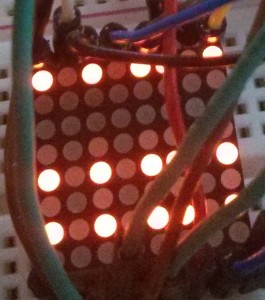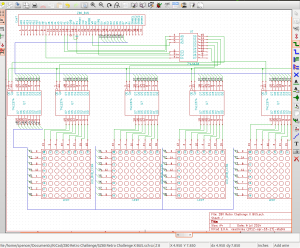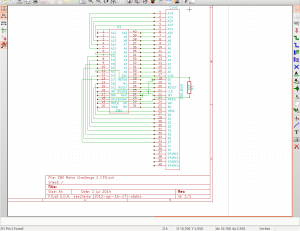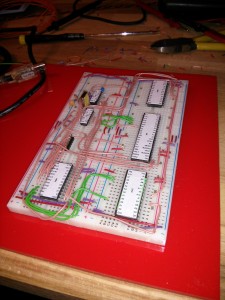So, today I finally did some hands-on retro wires and programming stuff instead of sitting at a PC doing CAD stuff.
I thought I knew how the LED matrix modules would work, in theory, but before I commit anything to copper and fibreglass, I’d like to test things out a bit. So I dug out my breadboard Z80 and fired it up to check it still worked (it did), and refreshed my memory on how the BASIC “OUT” command works with the ‘374 latches. Finding a bit of space on a breadboard, I plugged one of the modules in and wired it up in place of the bar graph and 7-seg displays I’d previously used as channel 0 and 1
I wanted to get a single dot on the display, so that meant turning the various pins high or low. One channel needed a single pin high with the other channel all high except for one pin. Or the other way around. Or just one pin on both channels. Or, maybe all high except for one on both channels. I could have gone through and calculated exactly which combination to use, but it was quicker to try everything. But I got very weird results





